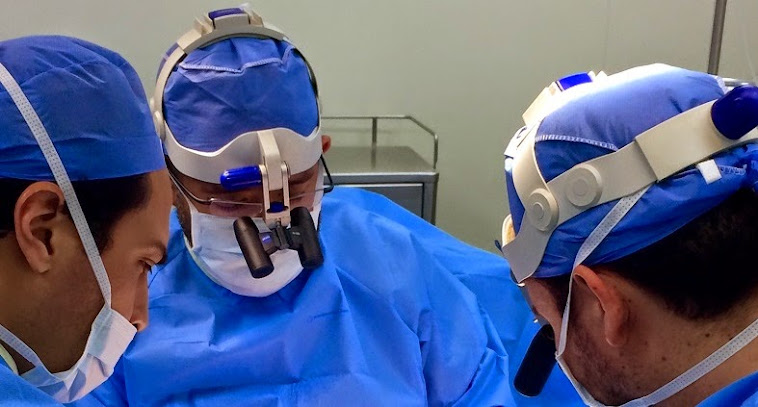When Can I Play Again? Return to Sports Testing for the Upper Extremity.
The following is another article written for the online, video-based physical therapy continuing education company MedBridge…
A lot has been written and researched with regards to return to sport criteria and testing for injuries of the lower extremity, and more specifically following anterior cruciate ligament reconstruction (ACL-R), however little attention has been given to injuries of the upper extremity. As with ACL-R, return to sport following surgical intervention in the upper extremity is less than stellar. Harris et al conducted a systematic review that found amongst elite pitchers undergoing shoulder surgery (rotator cuff, biceps/labrum, instability, internal impingement, ect.), only 68% returned to play 12 months following surgery. Additionally, they found that 22% of major league baseball pitchers included in their review never returned to sport. In agreement with these findings, Cohen et al evaluated the return to sport of professional baseball players following shoulder and/or elbow surgery and found only 48% of participants returned to the same or higher level of professional baseball following surgery. Why are these numbers so low and what can we do as rehabilitation specialists to improve the rate of return to sport following surgery?
Sometimes, it simply takes correctly identifying those who are at risk of re-injury or those simply not ready to rerun to their chosen sport. When devising an appropriate return to sport test, Phil Plisky, PT, DSc, OCS, ATC, CSCS says in his course, “Return to Sport and Discharge Testing“, that each test should be reliable, predictive of injury, have discriminate validity, and the test must be modifiable with training/rehabilitation. With regards to the upper extremity, there is a significant gap in knowledge/research in comparison to the lower extremity. That being said, the Y-Balance Test has recently been adapted to help fill this gap. Gorman et al investigated to reliability of the Upper Quarter Y Balance Test (UQ-YBT) and found that the test-retest reliability (0.80-0.99) and inter-rater reliability (1.00) ranged from good to excellent. Along with this information, normative data was determined amongst active adults with males generally performing the test superiorly to females and a minimally detectable difference of 8.1 cm in the medial direction, 6.4 cm in the superolateral direction, and 6.1 cm in the inferolateral direction. In addition to these findings,Westrick et al found that there was no significant difference between the dominant and non-dominant limb when young females or males perform the UQ-YBT. This shows that, generally speaking, any significantly asymmetrical findings should be investigated further prior to returning the athlete to his/her sport. While, currently, there are no studies investigating this test’s capacity to predict injury or its ability to be modified with training, the excellent reliability and discriminate validity make this a solid return to sport test.
Similarly, the Closed Kinetic Chain Upper Extremity Stability Test (CKCUEST)offers an additional way to assess upper extremity dynamic stability, albeit in a singular plane. Once again, this test demonstrates excellent reliability with a Test-Retest Reliability of 0.92 (Goldbeck et al), an intersession reliability ranging between 0.87 to 0.96 (Tucci et al), and an intrasession reliability ranging between 0.86 and o.97. Furthermore, Tucci et al also found the CKCUEST to have discriminate validity as those performing the test with diagnosed subacromial impingement performed significantly inferiorly in comparison to asymptomatic participants. Along with this excellent reliability and obvious display of closed kinetic chain dynamic stability, the CKCUEST also has recently been shown to have the capacity to predict injury. Pontillo et al performed a prospective cohort study attempting to identify potentially factors that would be predictive of upper extremity injury in collegiate football players. The only significant factor in predicting future injury in this population of athletes was a CKCUEST in which the athlete completed < 21 touches (Sn= 79%, Sp= 83%, + LR= 4.74, – LR= 0.25, Odds Ratio= 18.75). This is a significant finding and shows the benefit for utilizing this test not only for return to sport, but also in pre-season testing to identify individuals who are at risk for injury.
For a more demanding task, similar to the single-leg hop testing utilized for patients following ACL reconstruction, the One-Arm Hop Test was created to test the athlete’s plyometric, power, and dynamic closed kinetic chain stability. Unfortunately, to this date, there has only been one study investigating this specific return to sport test. Falsone et al found the test to have good Test-Retest Reliability (0.78-0.81) and also found only a 4.4% difference between non-dominant and dominant limbs when performing the test. This once again shows the ability to assess post-operative function based upon the symmetry between limbs. While this may not be a perfect solution, it allows the ability to utilize the test with evidence-based backing until further research is conducted investigating its ability to predict injury and/or be modified with training.
Returning an athlete to sport is a multi-factorial decision that must incorporate that athlete’s psychological readiness to return to play, strength, range of motion, pain level, and ultimately the ability to perform the movement patterns consistent with their sport and/or position. The aforementioned return to sport tests provides a hierarchical (i.e. increasingly demanding) system for testing the individual’s capacity to withstand the rigors of their chosen activity. This allows clinicians something outside of subjective reports, range of motion, and strength measures to assess your patient’s ability to perform dynamic upper extremity tasks prior to returning to sport and in doing so, we may be able to identify some of the deficits our athletes are hiding that are preventing them from ultimately returning to their sport.























